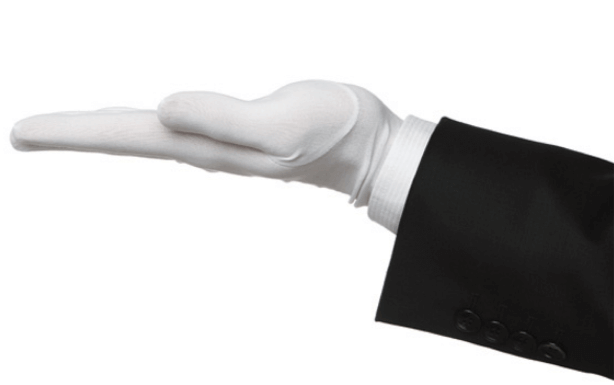
It is very helpful to develop a process map chart showing these various cost components. The chart helps not only to visualize the various components to the total COGS, but Coffee Shop Accounting it also serves as an aid for brainstorming opportunities for cost reduction. Every little bit counts when it comes to reducing expenses, so it’s important to scrutinize your budget and look for ways you can save. Keep your finger on the pulse by looking at your competitors’ prices to make sure they aren’t wildly different to yours. Inventory usage is what you’ve used in the given time period, expressed in dollars.
The Ultimate Guide to Beer Profit Margins? ›
- The cost of specialized brewing equipment is one of the largest hurdles for any brewery.
- In this scenario, the brewery has a profit margin of 20%, meaning that for every dollar of revenue, the brewery retains $0.20 as profit.
- If your prices go up too much, he will switch to a different brand or a different drink altogether.
- In China, the difference between premium and super-premium beer is its price.
- In assessing COGS reduction opportunities, it is important to look at all brands and SKUs.
- Breweries can also reduce production costs by sourcing high-quality supplies and ingredients at competitive prices.
- You may be surprised how much of an impact a small price increase can have on your overall profits.
The choice of distribution channels, such as self-distribution or working with wholesalers, can largely influence profitability. Wholesalers typically charge you some fee and take a portion of the profit, but in turn, they can help breweries reach a broader market. Even when breweries make a profit, they usually can’t just pocket that cash right away. Nope, they have to put it back into the business year after year to keep growing and meeting demand.
Inventory & COGS
Weighing these costs and benefits is essential when determining the optimal location for your brewery and its tasting room. Additionally, reusing yeast can impart distinct QuickBooks flavors and fermentation characteristics. Extending the lifespan of yeast is a common practice among breweries seeking to reduce costs, but it’s important to find the optimal threshold for reuse.

Analyzing Your Brewery’s Profit Margins: Essential Insights for Increased Profitability
- Another key strategy for improving brewery profit margins is controlling production costs.
- This is a common pricing strategy because it’s so straightforward.
- Our latest article offers valuable insights and essential tips on how to start a brewery, serving as a guiding light as you embark on this rewarding journey.
- Depreciation is not a real expense in that you do not pay every month.
- As the brewery becomes established, owners might draw salaries ranging from $20,000 to $100,000 or more annually.
Small breweries have the flexibility, the agility to pivot, to innovate, to cater to their local market with precision. They can experiment with new flavors, new processes, and have a personal connection with their customers. A great beer might get people through the door, but a great business model keeps the lights on. They need a financial backbone strong enough to support their creativity. Smart brewers explore every opportunity, whether it’s traditional small businesses financing options or modern solutions like Epos Now Capital, to make their vision a reality. Liquor distributors typically want to see 40% margins, according to Beverage Trade Network, so be prepared to discuss your pricing, shipping costs, and advertising budget.
Which is More Important: Revenue or Profit?

This lower margin reflects the high volume sales and competitive pricing. Carefully considering packaging options and distribution strategies is essential for breweries aiming to balance cost-effectiveness, product quality, and brand visibility. brewery accounting Small craft breweries have blown up in popularity for all kinds of reasons, drawing in fans not just locally but from all over the world.
COGS – Cost of goods sold

Use the same method as either bottled beer or craft beer but introduce higher overhead charges or markup. This is because installing and maintaining a draft system is costlier than ordering bottles or cans. You’ll also need to take into account spillage, over-pouring and spoilage — this happens more often when serving draft beer than with canned or bottled beer. However in an unlikely comeback, PBR sales rose by 5.3% in 2002. At the heart of the PBR revival were hipsters, a subculture made up of cool young urbanites who support under-the-radar brands and music. The latter placed a high value on PBR because it became cool to drink “uncool” beer and support the underdog.
Liquor wholesalers buy beer, wine, spirits and other alcoholic drinks from manufacturers, and sell them to pubs, bars, supermarkets and other liquor retailers. Liquor wholesalers have a smaller profit margin of 1.8%, relative to liquor retailers. This can be attributed to brewers bypassing wholesale and selling directly to retailers, and pricing competition among downstream retailers. Craft beer production in Australia has grown 6.2% over the past five years thanks to the shift towards premium beers and a growing emphasis on quality. However, the Covid-19 pandemic has put a damper on the industry since March 2020, with government-imposed restrictions limiting on-trade sales.
- The area with high demand for craft beer and strong customer base might be more profitable than those with low demand.
- Liquor wholesalers have a smaller profit margin of 1.8%, relative to liquor retailers.
- By focusing on metrics a few key metrics, businesses can make informed decisions and improve operations to ensure a flourishing future.
- It’s also important to make sure that your brewery is advertising and spreading the word about the quality and price of your craft beer.
- Lightspeed studied more than 13,000 retailers across different industries and countries and found that the average gross profit margin is 53.33%.
- Breweries that target niche markets and scale effectively often achieve sustained growth in the competitive craft beer industry.
What’s the average profit margin for a taproom?
Before the pandemic, on-trade distribution was expected to rise by 4%. Craft beer is increasing in popularity and availability in Australia. It has a 19.9% profit margin and accounts for around 23% of the market. Beer margins are the difference between sales and cost of goods sold (COGS). Margins are calculated by subtracting the cost of goods sold from the price of the beer. The salary of a brewery owner can vary significantly depending on the brewery’s size, profitability, and the owner’s role within the business.
However, in general, the profit margin for a brewery can range from around 10% to 25%. One significant advantage of implementing AR software is that it can increase cash flow by enabling breweries to collect payments faster. The software allows breweries to automate payment reminders, set up recurring payments, and accept payments online, making it easier for customers to pay their bills on time. Venturing into the world of brewery ownership is a thrilling endeavor, but it also comes with its share of challenges. To ensure enduring success, it is crucial to grasp the profit potential of your business.




